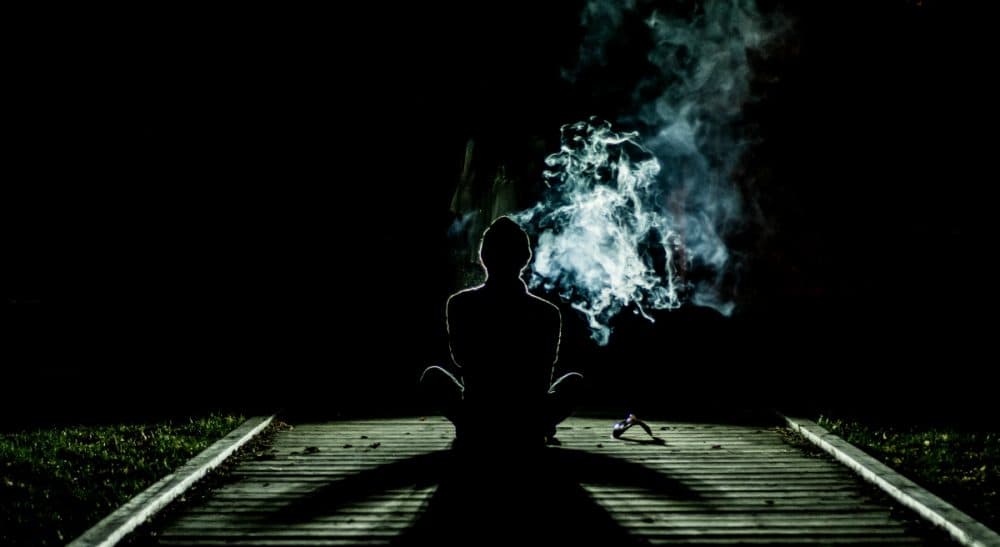Advertisement
From 'Mighty Opium' To Moral Crisis: Addiction As Cultural Cachet And Cautionary Tale

“Oh! Just, subtle, and mighty opium!”
Published in 1821, "Confessions of an English Opium-Eater," by the Oxford-educated Thomas de Quincey, is an eloquent, narcissistic, convincing account of both the thrill and the misery of opiate addiction:
“…a respite granted from the secret burthens of the heart; a Sabbath of repose; a resting from human labours… for all anxieties a halcyon calm; a tranquility that seemed no product of inertia, but as if resulting from mighty and equal antagonisms; infinite activities, infinite repose.”
"Confessions" appeared at the height of the West’s first opium crisis, fed first by the British East India Company’s monopoly on the opium trade and, later, after the Pharmacy Act of 1868 restricted the sale of opium in England, by the illicit and — lucrative — drug trade. Other Romantic writers, Coleridge and Shelley notably, had praised the stimulating effect of opium on creativity, but de Quincey’s book was about addiction itself. A cautionary tale, the piece had anything but a cautionary effect. De Quincey gave opium cultural cachet. He gave it allure. He made it seductive. He made "eating" -- or using — cool for eating’s sake, and opium became a recreational drug in the West, especially among the aristocratic classes.
There is no denying these are miracle painkillers, and we have become a society that does not tolerate pain.
“I have never regretted my experience with drugs.”
More than a century after de Quincey eulogized himself as an opium casualty, Harvard-educated William Burroughs wrote "Junkie: Confessions of an Unredeemed Drug Addict." Published in 1953, "Junkie" also presents the tension between self-love and self-loathing that is especially prominent in the addict. “I think I am in better health now as a result of using junk at intervals than I would be if I had never been an addict,” Burroughs writes. He continues:
“When you stop growing you start dying. An addict never stops growing... I experienced the agonizing deprivation of junk sickness, and the pleasure of relief when junk-thirsty cells drank from the needle. Perhaps all pleasure is relief.”
By that point, "junk" had little aristocratic cachet left. It was not until the late 1960s that methadone became an approved treatment for addiction, after which Burroughs found himself on such maintenance the rest of his life.
Today, despite falling heroin prices, the opium trade is as lucrative as ever, legitimized and subsidized by the health care system, such that the dividing line between addict and patient has become the prescription pad. What separates opiates from other illicit substances, after all, is their proven medical efficacy. There is no denying these are miracle painkillers, and we have become a society that does not tolerate pain. I am always saddened by the empty, terrified or uncomprehending looks I get when I try to discuss strategies for living with pain, for accepting it. This is a place very few doctors are willing to go with their patients. A prescription for opiates, then, legitimizes pain. Patients have often said to me, “I’m not an addict; I have a prescription for these.”
Here in Massachusetts, there has been an opiate crisis for several years now. Only recently, however, has it come to the attention, it seems, of our state’s elected leaders. Narcan, a very short-acting, very temporary, at times very dangerous antidote, initially sold as a means of reducing overdose deaths, is not a pharmacological solution to the problem. More recently, draft legislation has proposed increasing the number of available treatment facilities for addicts, and more drastically, there have been proposals to curb the civil liberties of addicts.
As a psychiatrist who works primarily in an emergency room setting, I work with a significant number of addicts in crisis. They range in age from pre-teen to advanced elderly; they are as likely to come from Weston as from Mattapan. They present to us with laundry lists of previous diagnoses, on any number of ineffective psychotropic medications; and often with histories of failed treatment attempts, whether at academic or private centers or community-based facilities.
So, why has nothing worked? Millions of research dollars have been pouring into that question, looking for the neuro-biological silver bullet, the addiction gene amenable to excision, the air-tight psychotherapeutic intervention. Sadly, little by way of lasting clinical utility has emerged from this investment.
A prescription for opiates...legitimizes pain. Patients have often said to me, 'I’m not an addict; I have a prescription for these.'
Treatment options are, therefore, very limited, because effective treatment does not exist. It is easy enough to urge someone struggling to get help. But what does such help consist of? We offer addicts detoxification; we offer them maintenance; we offer containment, if someone is suicidal or homicidal. None of these are long-term fixes. Addicts who recover don’t do so with Narcan; they don’t do so by languishing either in a $2,000-a-night private facility or a publicly funded jail. And maintenance should not be confused with recovery.
Addicts who succeed in overcoming addiction do it by coming either to a transcendental or existential awakening that medicine does not explain. In other words, they eventually realize that if they wish to get better, it is up to them to commit to change. Just ask a recovered addict.
Meanwhile, there are those who still believe there is something creative about the dense fog of intoxication. To which I say, for every de Quincey and Burroughs, there are millions of examples of the power of intoxication to quash all creativity. Mighty opium might be, as de Quincey put it. But the will to kick it must be mightier.
